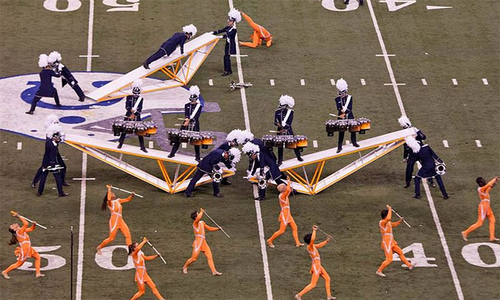Dr. Matthews joined the faculty at Denison in 2001 after completing a post-doctoral fellowship in the Center for Neurobiology & Behavior at Columbia University. He teaches Sensation & Perception, the Psychology of Music, Best Sellers in Psychology & Neuroscience, Advanced Statistics for the Behavioral Sciences, Research Methods & Statistics, and Introduction to Psychology. Seminars he has offered include “Perceptual Learning and Brain Plasticity”, “The Cognitive Neuroscience of Music”, “Neuroscience Senior Capstone Seminar”, “Comparative Psychology”, “Neuroscience and the Liberal Arts”, “Ruining Humor with Science”, and “NERDs Without Borders”. His research addresses issues in human vision and audition, with an emphasis on how these sensory systems improve with training.
Works
Research: Peer-Reviewed Journal Articles
17. Matthews, N., & Folivi, F. (2023). Omit needless words: Sentence length perception. PLOS One. 2023 Feb 24
16. Matthews, N., Welch, L., Festa, E.K., & Bruno (2021). Double Dissociation in Radial and Rotational Motion Sensitivity. PLOS One. 2021 Jan 28
15. Matthews, N., Welch, L., Festa, E.K., Bruno, A.A., & Schafer, K. (2020). Global Depth Perception Alters Local Timing Sensitivity. PLOS One. 2020 Jan 23;15(1) [PubMed]
14. Matthews, N., Welch, L., & Festa, E.K. (2018). Superior Visual Timing Sensitivity in Auditory but not Visual World Class Drum Corps Experts. eNeuro. 2018 Dec 14;5(6). [PubMed]
13. Matthews N, Welch L, Coplin FD, Murphy AJ, & Puritz MR, 2017. Visual Speed Sensitivity in the Drum Corps Color Guard. Journal of Vision, 17(8):7, 1-14. [PubMed]
12. Matthews N, Welch L, Achtman R, Fenton R, & FitzGerald B, 2016. Simultaneity and Temporal Order Judgments Exhibit Distinct Reaction Times and Training Effects. PLOS ONE, 11(1). [PubMed]
11. Clement A, & Matthews N, 2015. The Whole Is Faster Than Its Parts: Evidence for Temporally Independent Attention to Distinct Spatial Locations. Attention, Perception & Psychophysics, 24, 1-12. [PubMed]
10. Matthews N, & Welch L, 2015. Left Visual Field Advantage in Judging Simultaneity and Temporal Order. Journal of Vision, 15(2), 1-13. [PubMed]
9. Matthews N, Welch, L., Festa, E.K., & Clement, A. 2013. Remapping Time Across Space. Journal of Vision. 13(8):2, 1-15. [PubMed]
8. Matthews N, Vawter, M, & Kelly, J, 2012. Right Hemifield Deficits in Judging Simultaneity: A Perceptual Learning Study. Journal of Vision. 12(2):1, 1-14. [PubMed]
7. Kelly J, & Matthews N, 2011. Attentional Oblique Effect When Judging Simultaneity. Journal of Vision. 11(6):10, 1-15. [PubMed]
6. Reardon K, Kelly J, & Matthews N, 2009. Bilateral Attentional Advantage on Elementary Visual Tasks. Vision Research. 49(7), 692-702. [PubMed]
5. Strong K, Kurosawa K, & Matthews N, 2006. Hastening Orientation Sensitivity. Journal of Vision. 6(5), 661-670. [PubMed]
4. Matthews N, Rojewski A, & Cox J, 2006. The time course of the oblique effect in orientation judgments. Journal of Vision. 5(3), 202-214. [PubMed]
3. Matthews N, & Allen J, 2005. The role of speed lines in subtle direction judgments. Vision Research. 45(12), 1629-1640. [PubMed]
2. Saffell T, & Matthews N, 2003. Task-specific perceptual learning on speed and direction discrimination. Vision Research. 43(12), 1365-1374. [PubMed]
1. Stanley R, & Matthews N, 2003. Invalid cues impair auditory motion sensitivity. Perception. 32(6), 731-740. [PubMed]



